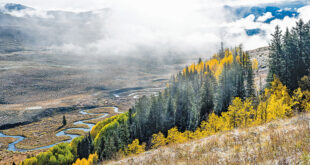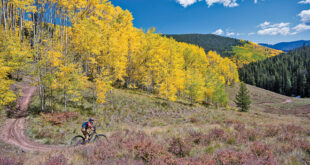More than six years ago, I attended a U.S. Forest Service meeting in Gunnison designed to kick off the start of Forest Plan revision process for the Grand Mesa, Uncompahgre, and Gunnison National Forest.
Forest Plans are important because they provide the broad strokes about how land is managed in our national forest. In Gunnison County, the Forest Plan is particularly important because a large percentage of our lands are managed by the Forest Service.
By law, Forest Plans are supposed to be revised every 15 years. The GMUG’s last Forest Plan was written in 1983 and revised slightly in the early 1990s—the Forest Service was already behind the eight-ball when they started the revision process in 2001.
The matter got complicated in 2005 when the Forest Service adopted a new method of drafting Forest Plans and Forest supervisor Charlie Richmond switched to the new process.
The new rule is meant to be more general in nature, and does not include specific project management decisions on timber harvesting, grazing, mining and motorized travel, which some environmental groups have criticized. Instead, decisions on those types of activities are meant to be made on a forest-by-forest basis, informed by local conditions, science and public input.
In the summer of 2006, the GMUG’s Forest Plan garnered national attention when senior officials with the Forest Service in Washington, D.C. asked the local office to make changes to the plan, after thousands of copies of the summary and CDs had been printed—prompting questions from local conservation groups and Senator Ken Salazar. Washington officials wanted to change the way energy resources—such as coal, oil and gas—were outlined in the plan.
A draft plan was finally released on March 16, 2007 only to be revoked days later when a California district court ruled that the Forest Service’s 2005 Planning Rule violated the Administrative Procedure Act, the National Environmental Policy Act, and the Endangered Species Act. The Forest Service responded with another planning rule to guide Forest Plans, released in April 2008.
In the latest development, Richmond stated in a press release earlier this month that he has decided to delay formal resumption of the Forest Plan revision effort until it is determined how Colorado’s roadless rule will be implemented. The state roadless rule is currently undergoing a series of public hearings, hosted by the U.S. Forest Service. Public hearings on a draft environmental impact statement and rules for managing roadless areas in the state’s national forests started on August 18; public comment will be taken until October 23.
All this means that Gunnison’s Forest Plan is still years away from being implemented. Three years ago, the Forest Service said that under its new rule, Forest Plan revisions would take an average of two to three years, instead of five to seven years. That timeline is now laughable.
To put it plainly, something is broken.
It should not take more than eight years (or 10 to 15 years) to adopt a Forest Plan that is supposed to have a 15-year shelf life. Right now, the work conducted by Forest planners to develop the 2007 plan is growing stale and entire chunks of it might have to be scrapped. Some of that might be appropriate to bring it in line with our county’s beliefs and reflect the realities of global warming. However, what’s entirely inappropriate is the waste of taxpayer dollars on a drawn out process that we have little control over locally. One person told me that the GMUG might be the most politically battered national forest in the country during the last eight years.
It’s time we say enough. We, as taxpayers, are not getting what we deserve out of the Forest Plan process. We must demand a fiscally responsible plan that we can digest, debate and implement, now.
—Aleesha Towns
 The Crested Butte News Serving the Gunnison Valley since 1999
The Crested Butte News Serving the Gunnison Valley since 1999





